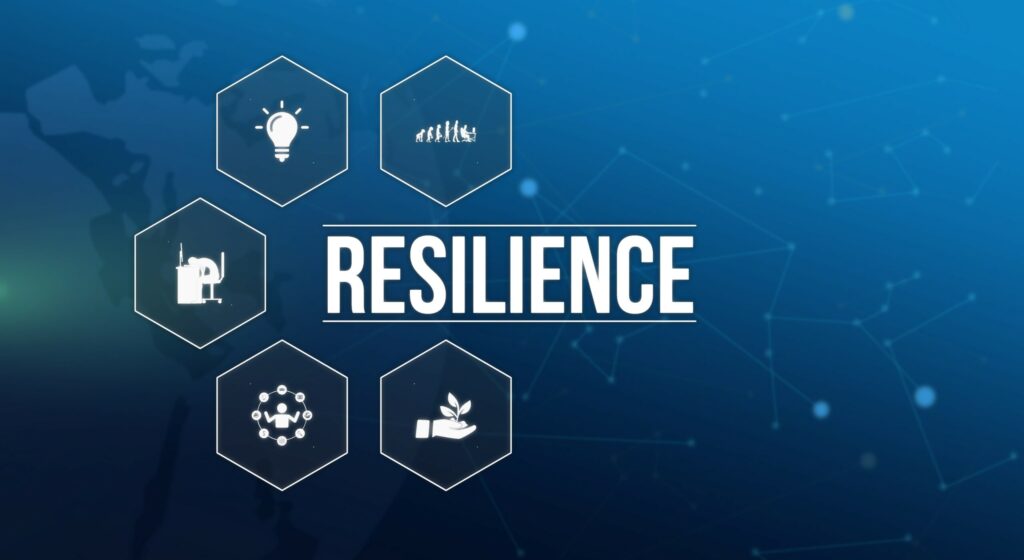Automakers Shift to Smart Supply Chains

Although the pandemic may be over, auto suppliers and original equipment manufacturers (OEMs) are still grappling with supply chain issues such as concern over net-zero promises, the growing EV market, geopolitical conflicts, evolving trade agreements, natural disasters, and high interest rates deterring shoppers.
These challenges prove that suppliers and OEMs must rethink their supply chain management strategies to remain agile and competitive. With so many hurdles to overcome and constantly changing variables, auto suppliers and OEMs can no longer dictate their supply chain management and manufacturing on reactive consumer demand; rather they must scale resilient, digitally enabled supply chains.
Bumps in the Road
Unfortunately, most suppliers and automakers have not deployed smart supply chains. A recent Capgemini report finds that just 53% of auto suppliers and OEMs have mature intelligent supply chains.
Suppliers and OEMs must consider numerous factors as they scale intelligent supply chains:
• Raw material and resource scarcity. Suppliers and OEMs are still dealing with raw material and resource scarcity—low supplies of rare earth minerals, the ongoing semiconductor shortage—which in turn has added yet another fire for auto leaders to put out while simultaneously attempting to rearchitect their supply chains.
• Transition from offshoring to nearshoring and reshoring. Suppliers and automakers are wisely learning from their mistakes during the pandemic and bringing operations closer to home. The same Capgemini study finds that offshore locations have fallen 22% in the past two years.
In the long run, moving facilities—particularly procurement functions—closer to a centralized base will enable more resilient supply chains. However, in the short term, this will present some challenges as it’s no easy feat moving halfway around the world.
• Unattainable stock levels. Despite a two-year inventory shortage, OEMs are arguably sitting on too much inventory. Some leaders may be scarred by the lack of production, and therefore sales, during the pandemic, so they are practically stockpiling inventory to ensure manufacturing operations can continue. However, this places financial burden on suppliers sitting on more stock than normal. What’s more, there is now concern this influx of inventory will lead to oversupply and may cause car prices to decline as a result.
• Lack of circularity. With so many procurement issues and consumers’ growing expectation for sustainable business practices, suppliers and auto manufacturers would be wise to implement circular supply chain processes into their overarching intelligent supply chains.
While 73% of automotive executives agree that participation in the circular economy is necessary to achieve long-term financial and competitive goals, only 53% followed a circular economy strategy in 2022. That’s slightly understandable considering there is currently not enough recycled material suppliers, or even an adequate supply of recycled auto materials, to help OEMs manage circular supply chains.
• Deteriorating supplier-OEM relations. Auto suppliers and automakers have had a notoriously complex dynamic, but the pandemic furthered strained relations and workflows. From the supplier side, there is uncertainty in OEMs’ manufacturing and inventory data and a general consensus that automakers overorder. OEMs mistrust suppliers’ sustainability data and generally demand more accurate forecasts of their supplies and timelines.
The key to resilience is making supply chains more intelligent and sustainable. Suppliers and OEMs cannot just invest in technology without a plan, nor can they uproot supply chain facilities and functions around the world. They need a transformation strategy that addresses workforce management, digital deployments, partnerships, and circularity.
Tactics to Consider
Here are just a few tactics all suppliers and auto manufacturers should consider to future-proof supply chains:
• Increase investments in data strategy and data-driven capabilities. Data is the cornerstone of smart supply chains. Companies need data to inform a variety of digital technologies, track business outcomes, and measure carbon emissions. That is why the quality and quantity of auto organizations’ data is key.
Enterprises need more real-time data across their supply chains, business functions, and third-party partners. Once this data is acquired, suppliers and OEMs must improve their data platform capabilities as well as data integration using analytics tools. Leaders should consider using AI to not only gather more data, but also enhance predictions.
• Adopt inventory optimization technology. Inventory optimization is essential to remain competitive in today’s crowded auto market. Utilize predictive analytics and machine learning to improve demand forecasting and anticipate disruptions.
Digital twins can also help to predict issues and, beyond inventory optimization, can aid in developing and deploying intelligent supply chains before operations begin by simulating physical environments and equipment and real-world scenarios.
• Prepare the workforce for the future. Auto leaders cannot forget their people are key to their success. As digital transformation agendas progress and companies adjust to more EV-centric business models, leaders will need to ensure their people have the necessary skills to play an active role in the enterprise’s evolution. This means identifying new roles made possible by technological advancements and upskilling or reskilling workers according to the organization’s needs and digital maturity.
• Develop new supplier-OEM relations policies. Auto suppliers and automakers have had strained relationships for years. The breakdown in trust and communication can be traced to a lack of transparency.
OEMs should clearly state their expected contingency provisions from suppliers once both parties share their forecasting frameworks and findings. Regular touchpoints should be scheduled for an agreed-upon cadence.
Prior to this, companies should outline expectations and agendas to ensure all the information they will need will be clearly communicated. Issues may still arise, which is why leaders from partner organizations should outline processes to review and resolve concerns at the onset of their contractual agreements.
• Integrate circularity practices into overarching intelligent supply chain strategies. With enterprises so focused on procuring materials, manufacturing auto parts and vehicles, and transporting products, it can be easy for suppliers and OEMs to forget about the reverse flow.
Circular supply chains allow for parts and products to be sent back to companies so they can repair, resell, reuse, or recycle these goods. Bringing goods back across the supply chain requires new processes, investment in labor, transportation, and certain manufacturing equipment, recycled material suppliers, and consumer buy-in to increase the supply of materials.
Once auto suppliers and manufacturers implement these tactics and eventually scale intelligent supply chains, they can future-proof their businesses after three years of unprecedented disruptions. These solutions and management strategies will streamline operations, optimize inventory, improve production rates, and predict and help mitigate issues. This will lead to reduced costs, faster time to market, and potentially more sales.
Beyond financial and operational benefits, auto enterprises can reduce emissions and overall carbon footprints thanks to intelligent supply chains. With enhanced planning, procurement, production, and transportation throughout various touchpoints, digitally enabled supply chains produce less waste, consume less electricity and water, and burn less fossil fuels.
Resilient auto supply chains also spur enhanced customer experience and loyalty. Automotive consumers can now get cars and parts in a reasonable time and receive real-time order updates. And environmentally conscious consumers will be drawn to brands that showcase their sustainable supply chain practices and include customers in circular supply chain initiatives.
More Work to be Done
Just because the pandemic has ended does not mean that supply chain issues have subsided for automotive suppliers and OEMs. Although leaders are aware of the ongoing post-pandemic supply chain issues and the important role digital solutions play in mitigating such challenges, there is still much work to be done before the global automotive industry has fully scaled resilient, connected, intelligent supply chains.
The current approach of building additional working capital and inventory is not sustainable. The best solution to achieve long-term resilience is with trust, transparency, and data-driven intelligence across each layer of supply chain.
With an oversupply of products likely to cut prices, material scarcity, geopolitical conflicts and trade regulations, and pressure to decarbonize, the time is now for suppliers and automakers to future-proof their supply chains and stake their claim in the market.

